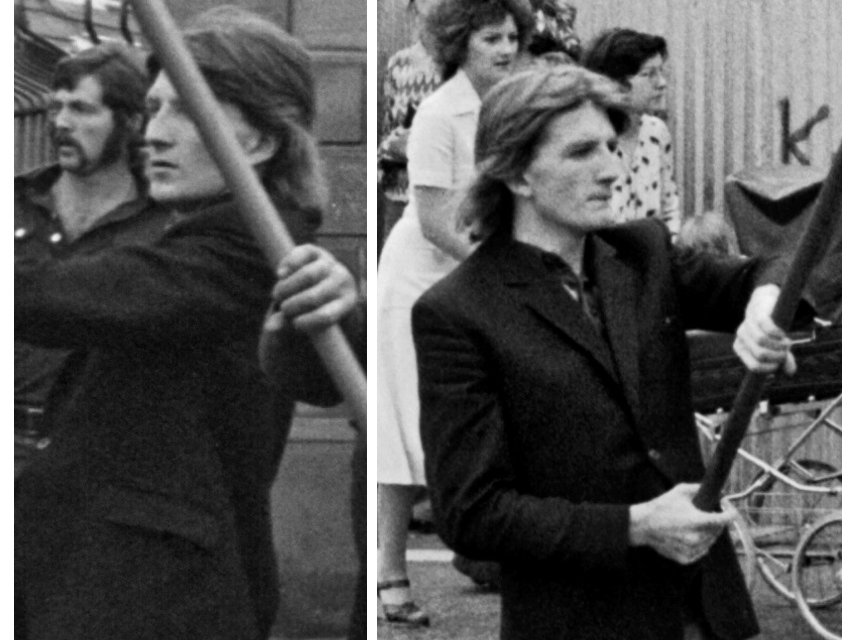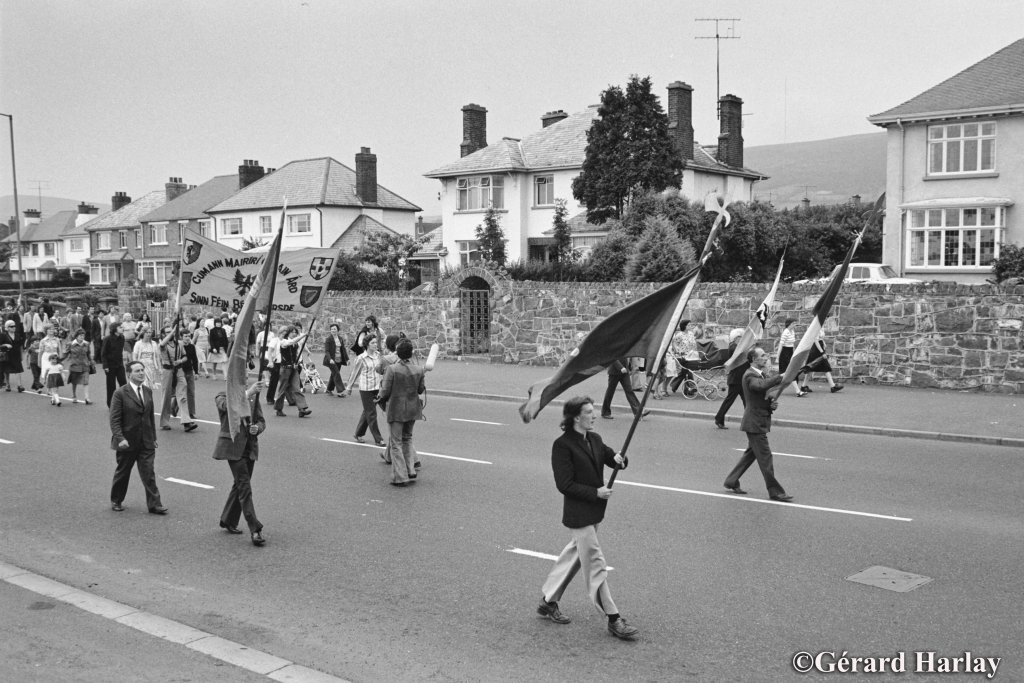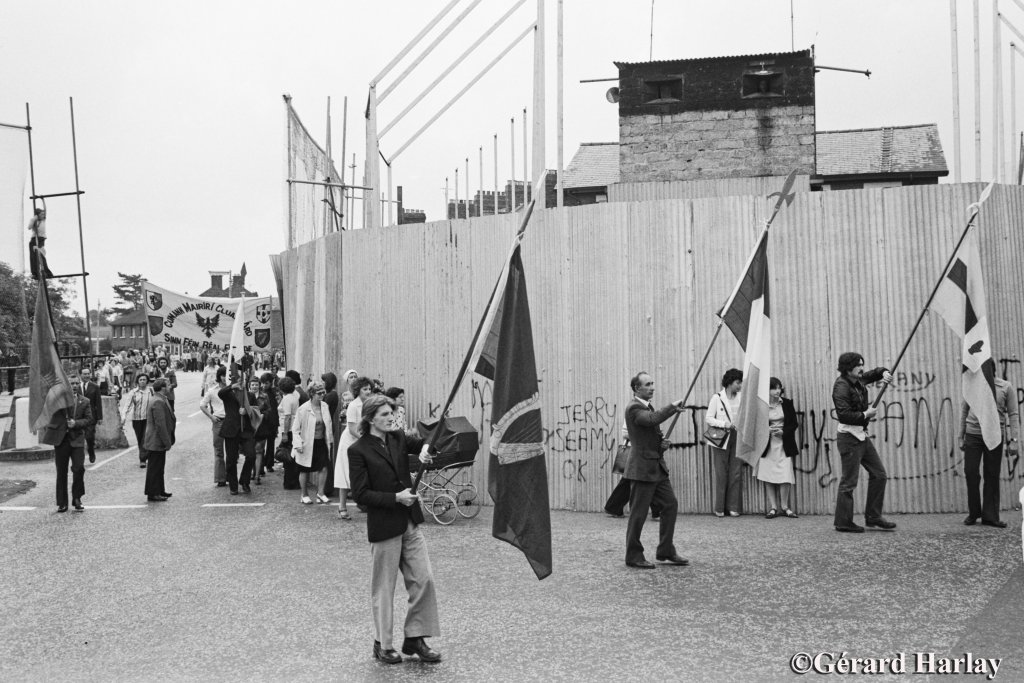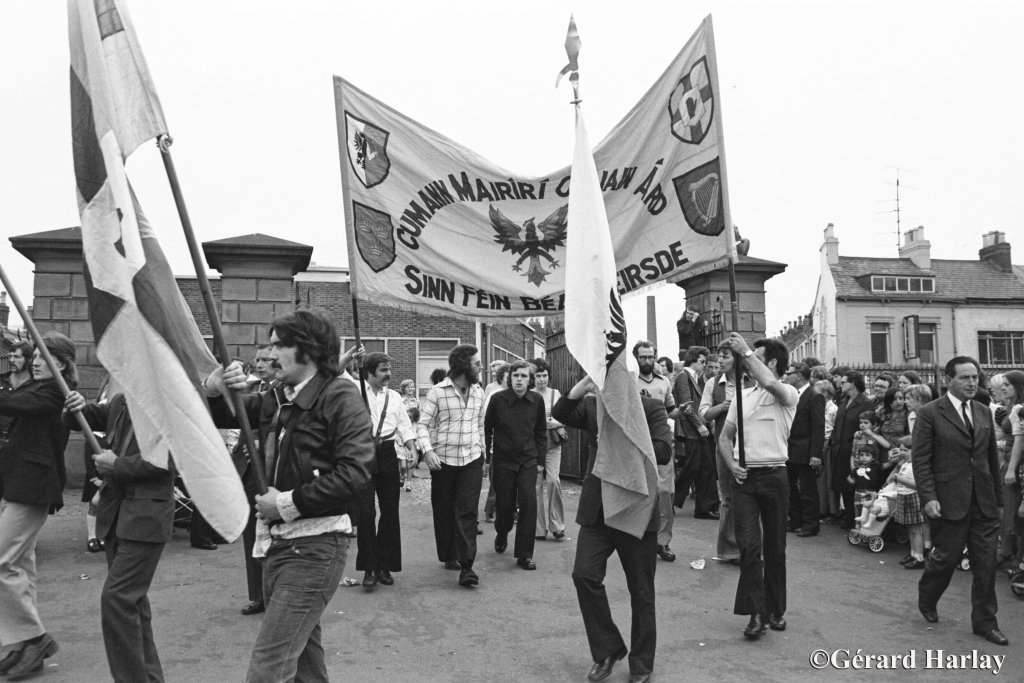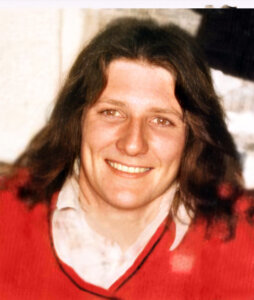Incredible photographs of Bobby Sands from August 1976, possibly the last taken of him before his arrest weeks later, have been discovered in the archive of French photographer Gérard Harlay. Gérard covered the conflict between 1972 and 1976 and last March donated his archive (©Gérard Harlay) to, amongst others, the Bobby Sands Trust and the Museum of Free Derry. He plans to display at Féile an Phobail in 2022 (the fiftieth anniversary of him first coming to Ireland) a range of his extraordinary photographs of life in Belfast and Derry back then.
A few weeks ago, former Long Kesh prisoner Richard McAuley was carrying out research for Gerry Adams who was writing a book on the late Máire Drumm (which has just been published – see below). Richard was looking for photographs of Máire and was going through Gérard’s photos when he suddenly recognised Bobby Sands in several shots.
Bobby had been released from Long Kesh in April 1976, just a month after the British government withdrew political status for those arrested after 1st March and convicted of ‘scheduled’ offences.
On 8th August, 1976, Belfast Sinn Féin organised a march from the Busy Bee in Andersonstown to Dunville Park for a public meeting to protest against the withdrawal of political status. It was the first major mobilisation after the ending of Special Category Status the previous March. Days later several of those who attended were arrested and remanded in custody charged with taking part in ‘an illegal procession’, including Máire Drumm.
___________________
Andersonstown Road/St Agnes Drive
The first picture in the series features flagbearers (front) – Bobby (on the left); the late Jimmy Roe; and Kevin ‘Igor’ Carson (right); (second row, middle) Máire Drumm (and, behind her, the late Marie Moore with loudhailer).
_____________________
Andersonstown Road
Bobby (to the front) and the person behind the second flag bearer is the late Joe Stagg whose brother Frank had died on hunger strike earlier in 1976.
_______________________
Andersonstown Barracks
The march as it passes the Andersonstown Road Barracks.
____________________
Dunville Park 1
The march as it enters Dunville Park. Bobby is just visible at the back.
____________________
Dunville Park 2
Again, Bobby is visible (far left), slightly obscured by the flag pole.
Five weeks after these photographs were taken Bobby was arrested on an IRA operation and was subsequently sentenced to fourteen years in jail without political status. He immediately went on the blanket protest and from the H-Blocks, under the pen name ‘Marcella’ (his younger sister’s name) he wrote hundreds of poems and short stories, large numbers of which are believed lost as they were written on the cell’s walls before they could be transcribed.
Bobby began his hunger strike on 1st March 1981. On April 9th he was elected MP for Fermanagh and South Tyrone. He died after sixty-six days on 5th May and was followed by nine other comrades: Francis Hughes, Raymond McCreesh, Patsy O’Hara, Joe McDonnell, Martin Hurson, Kevin Lynch, Kieran Doherty TD, Thomas McElwee and Micky Devine.
__________________
The following, related feature, is from Gerry Adams’ column in this week’s Andersonstown News.
Máire Drumm – Leader and Visionary
Tuesday, October 22nd, was the centenary of the birth of Máire Drumm. Many readers will know of her. Máire was one of the most courageous and visionary leaders Irish republicanism has ever had.
This week I published a book on Máire. It is the latest of a little series of 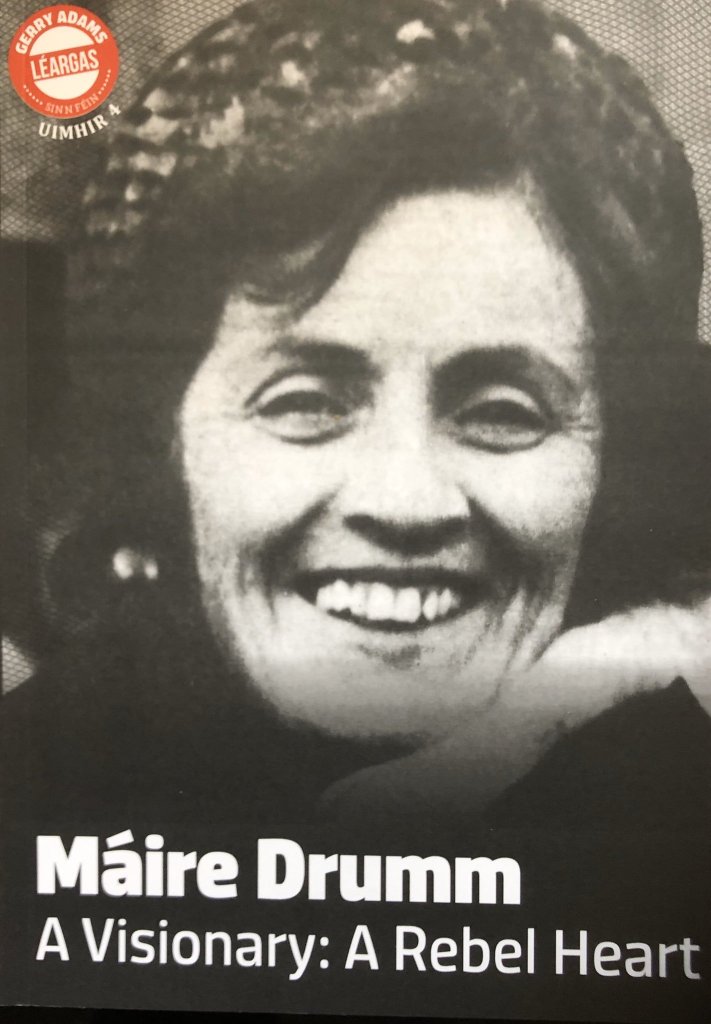 books in the Leargas series which so far has included folklorist Michael J Murphy, republican leader John Joe McGirl and human rights lawyer Pat Finucane. I intend to republish a book on Sheena Campbell by Ella O’Dwyer and others in the next short while.
books in the Leargas series which so far has included folklorist Michael J Murphy, republican leader John Joe McGirl and human rights lawyer Pat Finucane. I intend to republish a book on Sheena Campbell by Ella O’Dwyer and others in the next short while.
Máire was born Máire McAteer on Kelly’s Road, Killean, in South Armagh on October 22nd, 1919. She was the eldest of four children – Christina (Teenie), Tommy and Seán. Máire attended Killean Primary School and later Our Lady’s Grammar School in Newry. When partition was imposed the McAteer family, like many others, found themselves trapped on the northern side of a border they did not want and in a state which did not want them.
The ditch at the end of the field at the back of her home was the border. For Máire it was an injustice she opposed all of her life. As a teenager Máire enjoyed Camogie and Irish dancing. After leaving school she worked for a time in John Quinn’s shop– The Milestone, which is reputed to have been the first supermarket in Newry. She left for Liverpool when she was 16 in search of work with her sister Teenie. There she joined the Gaelic League. She then moved to Dublin where she lived in Baggot Street. Máire joined Sinn Féin. In 1939 she moved to Belfast where she found work in a grocery shop in the Falls area of West Belfast. Over the next three decades she worked in a series of shops and supermarkets, including as deputy manager. Máire worked in Quinn’s in Ardoyne, and for Stewarts Cash Stores.
Máire was very active as a camog in her local club Gael Uladh. She went on to become the Antrim Secretary and later the chairperson of the Ulster Council of the Camogie Association and All-Ireland Vice Chairperson. Máire was also involved in the McAleer School of Irish Dancing. Later she was prominently involved in planning and raising money for the opening of Casement Park in 1953.
Máire was always very supportive of the republican political prisoners. She was a member of the Green Cross, raising money for prisoners and their families. It was common practice then for republicans in Belfast to visit republican prisoners from outside Belfast, in Crumlin Road Prison. It was there that she met Jimmy Drumm. They were engaged before Jimmy was released.
Máire and Jimmy were married in St. Paul’s Church on the Falls Road on 16th July 1946. In 1956 Máire and Jimmy got a house in Glassmullan Gardens, in Andersonstown. There they raised their five children – Seamus, Margaret, Seán, Catherine and Máire Óg.
December 1956 saw the commencement of Operation Harvest – the IRA Border Campaign. Jimmy Drumm was arrested and held for four years until his release in 1960.
In the 1960s a focus on the denial of civil rights saw the establishment of the Civil Rights Association. When the unionist state responded violently in the pogroms of 1969 both Máire and Jimmy were centrally involved in helping the thousands who were forced to flee when their homes were destroyed by marauding gangs of RUC and loyalists.
Like many other homes, the Drumm home became a sanctuary for refugees. Máire was instrumental in having La Salle Secondary School opened to the refugees. And while Máire was busy helping deeply traumatised families Jimmy was trying with others to secure the weapons needed to defend Catholic areas. The subsequent split within republicanism in 1969 and 1970 saw Máire and Jimmy support what, for a time, was called ‘the Provisionals’.
The years that followed were busy ones for Máire and Jimmy. It was a time for courage and leadership and both stepped forward. Despite harassment, death threats, imprisonment and a vicious and scurrilous campaign of hate by the British media Máire refused to be browbeaten or bullied. She led from the front. Sinn Féin was still a banned organisation but Máire simply saw that as a challenge to be overcome.
An example of her leadership and courage occurred in July 1970 when the British Army placed the Falls community under military curfew. The streets of small terraced houses off the Falls Road were smothered in clouds of CS gas. Families were trapped in their homes choking from the gas. Three thousand soldiers and armoured vehicles surrounded them. The British soldiers smashed down front doors and wrecked homes, assaulting residents and looting property. Four people died and many more were injured or arrested.
People ran out of food. Mothers ran out of baby food. Despite appeals from local clergy the British Army refused to allow anyone to go to the shops. Máire led a march of Belfast women into the Lower Falls, with food supplies for the besieged residents. There is a famous piece of black and white film footage which shows hundreds of women proudly and defiantly marching into the lower Falls and brushing armed British soldiers aside. The curfew was broken.
In the years that followed Máire became Leas Uachtarán of Sinn Féin. She was arrested many times and was imprisoned in Armagh Women’s Prison and Mountjoy Prison. She led the campaigns against internment and the ending of political status.
On 8th August 1976 Máire led the first big political status march in Belfast. Gérard Harley, a French photographer, sent Tom Hartley a large archive of photos from the 1970s. Richard McAuley scoured this archive and others for photos of Máire for the new book. To our great delight we discovered previously unrecognised photos of Bobby Sands, including one on the Andersonstown Road which clearly shows Bobby, Máire, and Marie Moore with a loud hailer.
On October 28th 1976, just days after Máire had celebrated her 57th birthday loyalist gunman entered the Mater Hospital where she was being treated for an eye problem and shot and killed her.
Last Tuesday evening at her home place in South Armagh we celebrated her life. We remembered the exceptional human being who in difficult and challenging times, and at great risk to herself, stepped forward to give leadership. The threats, the arrests, the periods of imprisonment never deterred Máire. Never broke her spirit or her determination to achieve an end to partition and a united Ireland. That was Máire Drumm.
The book: Máire Drumm A Visionary: A Rebel Heart is now available in the Sinn Féin bookshop and online here

